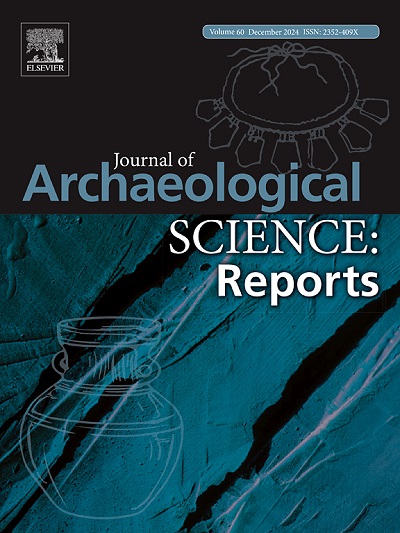Determination of the origin of lead objects from Risan and Riječani (Montenegro) based on lead isotope analysis
IF 1.5
2区 历史学
0 ARCHAEOLOGY
引用次数: 0
Abstract
The determination of the origin of raw material is an important aspect of archaeological research. This study attempts to identify the sources of lead ores used to produce lead objects by communities inhabiting the Bay of Kotor and its surroundings between 3 BC and the Middle Ages. The objects come from archaeological sites in Risan and Riječani (Montenegro). Samples were taken from joints of columns and pedestals. One sample was identified as probably recycled, indicated by a significantly increased Sn content. Pb isotopes were measured and the results were compared with literature data for Roman mines from the areas of present-day Algeria, Austria, Bosnia and Herzegovina, Bulgaria, Cyprus, Egypt, France, Germany, Greece, Israel, Italy, Montenegro, Morocco, North Macedonia, Portugal, Romania, Spain, Serbia, Tunisia and Turkey. The results indicate the use of mainly Greek and/or Serbian or Bulgarian deposits. However, a good match to the North Macedonia deposits is also visible. There are also matches to individual deposits from Italy, Romania, Turkey and Tunisia. However, these directions seem less promising due to the long transport and the availability of closerdeposits.
根据铅同位素分析确定黑山里桑和里杰阿尼地区铅物的来源
原料来源的确定是考古研究的一个重要方面。本研究试图确定公元前3世纪至中世纪期间居住在科托尔湾及其周边地区的社区用于生产铅制品的铅矿的来源。这些物品来自里桑和里杰阿尼(黑山)的考古遗址。样本取自柱子和基座的连接处。其中一个样品可能是回收的,表明锡含量明显增加。测量了铅同位素,并将结果与来自今天的阿尔及利亚、奥地利、波斯尼亚和黑塞哥维那、保加利亚、塞浦路斯、埃及、法国、德国、希腊、以色列、意大利、黑山、摩洛哥、北马其顿、葡萄牙、罗马尼亚、西班牙、塞尔维亚、突尼斯和土耳其等地区的罗马矿山的文献数据进行了比较。结果显示主要使用希腊和(或)塞尔维亚或保加利亚的存款。然而,与北马其顿的矿床也很匹配。意大利、罗马尼亚、土耳其和突尼斯的个人存款也有匹配。然而,这些方向似乎不太有希望,因为运输时间长,而且距离更近。
本文章由计算机程序翻译,如有差异,请以英文原文为准。
求助全文
约1分钟内获得全文
求助全文
来源期刊

Journal of Archaeological Science-Reports
ARCHAEOLOGY-
CiteScore
3.10
自引率
12.50%
发文量
405
期刊介绍:
Journal of Archaeological Science: Reports is aimed at archaeologists and scientists engaged with the application of scientific techniques and methodologies to all areas of archaeology. The journal focuses on the results of the application of scientific methods to archaeological problems and debates. It will provide a forum for reviews and scientific debate of issues in scientific archaeology and their impact in the wider subject. Journal of Archaeological Science: Reports will publish papers of excellent archaeological science, with regional or wider interest. This will include case studies, reviews and short papers where an established scientific technique sheds light on archaeological questions and debates.
 求助内容:
求助内容: 应助结果提醒方式:
应助结果提醒方式:


